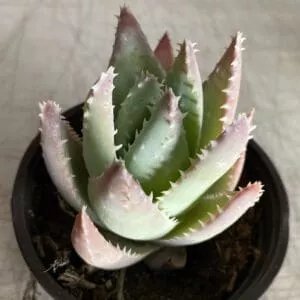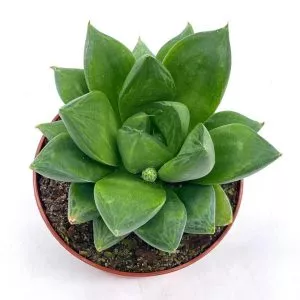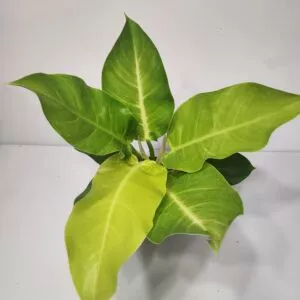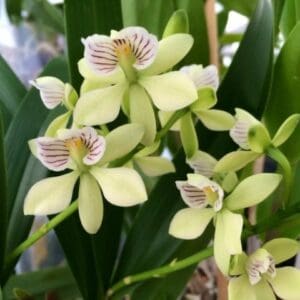No products in the cart.
Table of Contents
Calathea makoyana, known as the peacock plant, has gorgeous leaves. One thing is for sure: this plant standing in the home is a sight that you will stand and stare at often.
Today, we will share some tips on caring for the Calathea makoyana. So, whether you are excited about getting one or already have one, this article is for you.
What is Calathea makoyana?
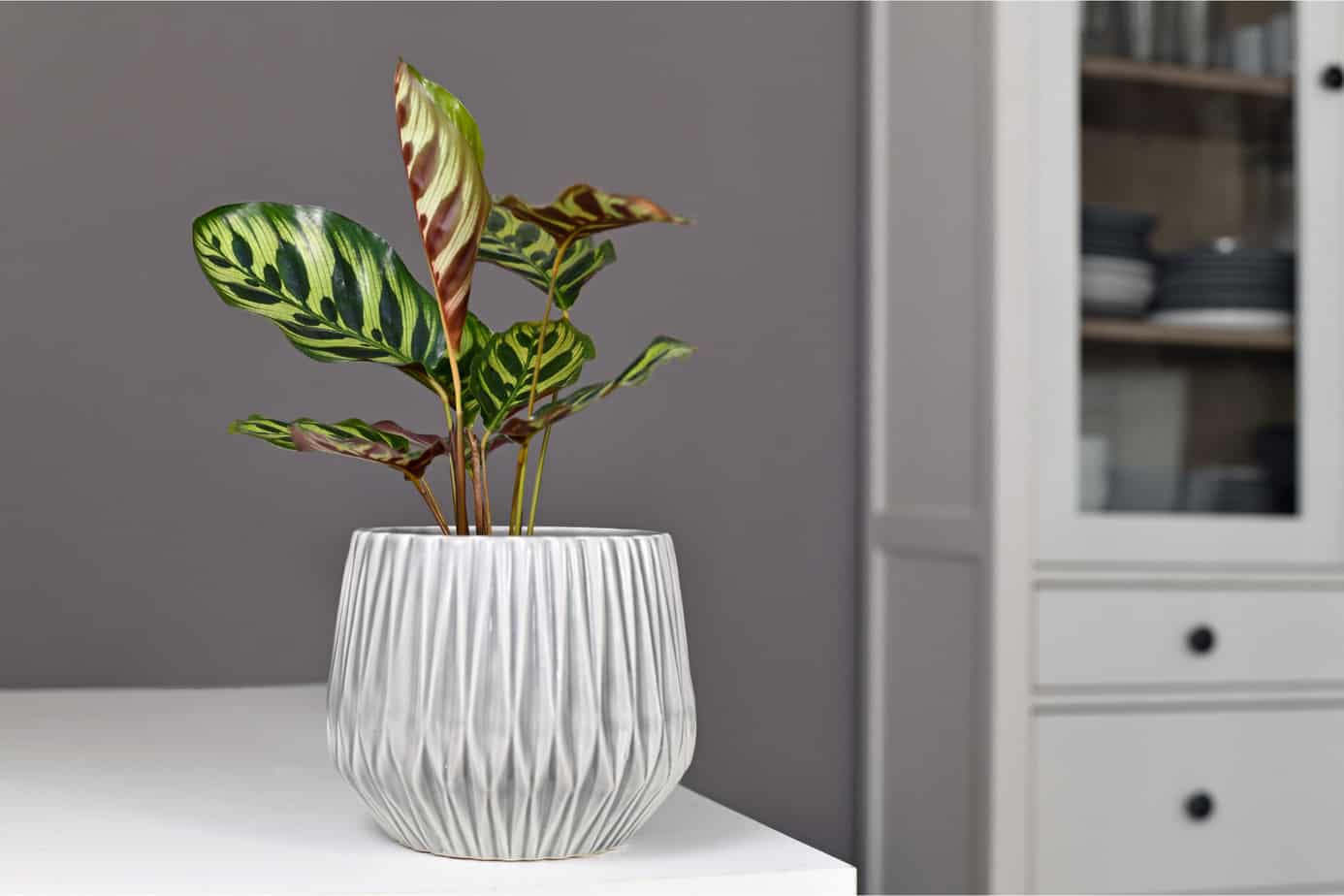
You must agree that these tropical houseplants are beautiful and will brighten your living space with contrasting green and purplish-red foliage. The plant does well as a house plant and has Brazilian roots.
You find them growing under canopies of trees and have a tall, slender form, taking up little space in the home. The peacock plant can grow up to two feet tall, with the leaves growing to 12 inches long.
The leaves have a feathered effect from the middle to the outer edges. Another fascinating thing is the pinkish-maroon undersides. This is because new leaves start pink before unrolling. But that is not all!
The Calathea makoyana is sometimes called cathedral windows; at night, the leaves fold when dark, similar to other prayer-plants.
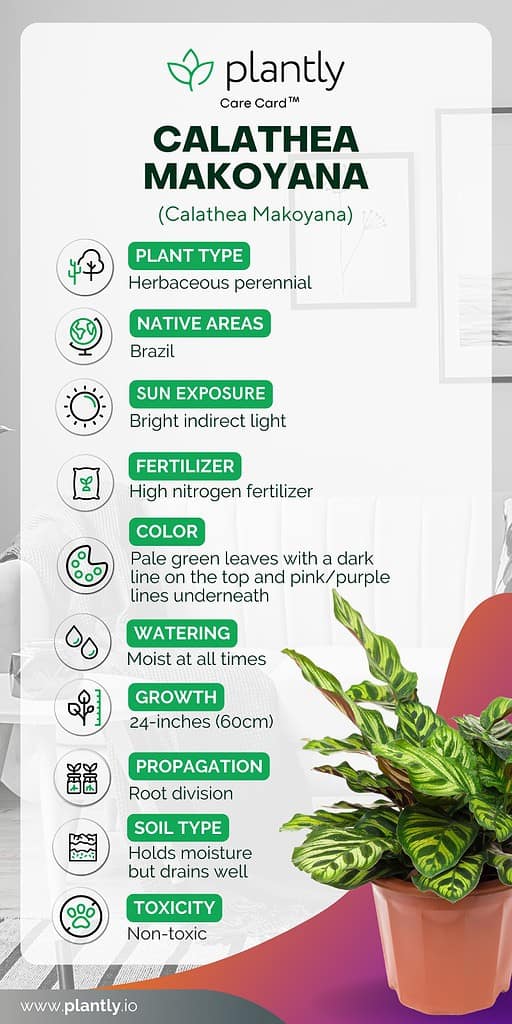
Peacock Plant Care
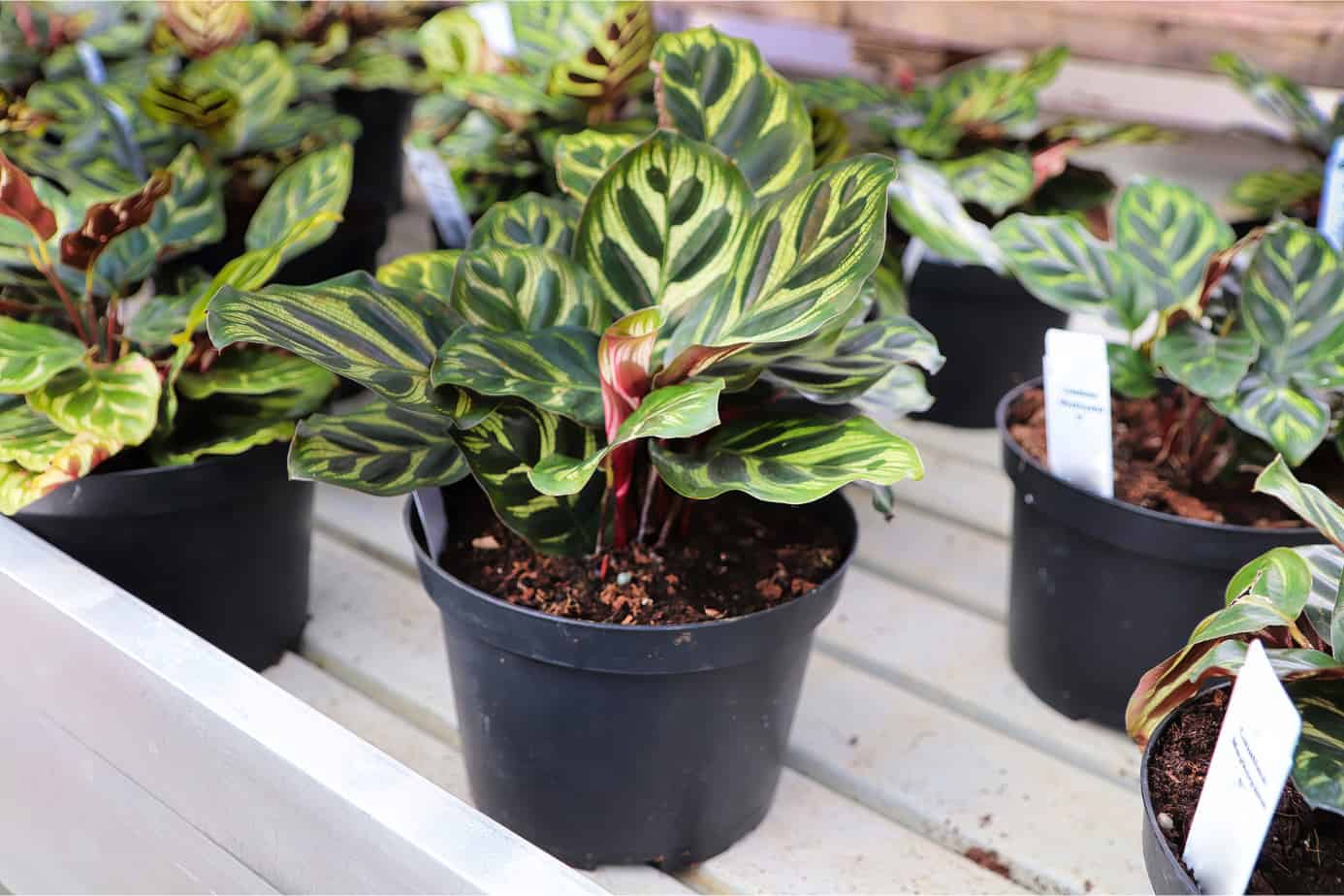
You typically grow the Calathea makoyana as an indoor plant with warm temperatures year-round. But it does not mean you cannot cultivate them as outdoor plants.
If you live in the USDA hardiness zones 10a to 11, you can grow these house plants outside under shrubs and trees as they do not enjoy direct sunlight as it can burn those striking leaves.
If you prefer growing it as a houseplant for its attractive foliage, you can keep it that way by wiping it down with a damp cloth and the following tips to keep it healthy.
Calathea Peacock Plant Soil
Regarding planting care, this evergreen perennial needs a fair amount of moisture, but the soil must not drain too fast. The roots need enough aeration, but not just any potting soil will do.
Your peacock plant will be happy in a pot with enough drainage holes and soil where excess water will run through but remain moist. So, what is the best potting soil for indoor gardening and this Calathea plant?
The most suitable one is two-part peat moss or coco coir, one part perlite, and some coarse sand. It’s best not to use straight sphagnum peat moss or coconut coir as it retains too much water, leading to root rot.
Or, you can also invest in a peaty mix or African violets. This soil type will allow for moisture retention but will not leave soggy soil.
Peacock plant light
The peacock plant comes from tropical regions, and it grows under tree canopies with little light.
To keep your plants happy, you can place them in bright indirect sunlight in a north or east-facing window. If you do not have a windowsill with indirect light, you can place your indoor plants a bit further away to shield them from the direct sun.
When your plant receives too much light, the dark green feathered effect fades, resulting in browning at the tips. On the other hand, low light will result in slower growth, and the bold markings fade while smaller leaves become more notable.
Calathea makoyana Watering
Now, gardeners, this section is vital. The trick for a healthy plant is to keep the soil moist but not soggy.
Once you feel the soil surface dry, you can give your peacock plant water. So, you can take your peacock plant to the sink and give it some water using distilled or rainwater. Using distilled water is better than tap water as it has fewer chemicals.
Once you notice the water running through the drainage holes, you know it’s nice and wet. So, let your plant stand to remove the excess water for a while. During the winter months, your plant grows slower, and it helps to wait for about half an inch of the soil to dry out before watering.
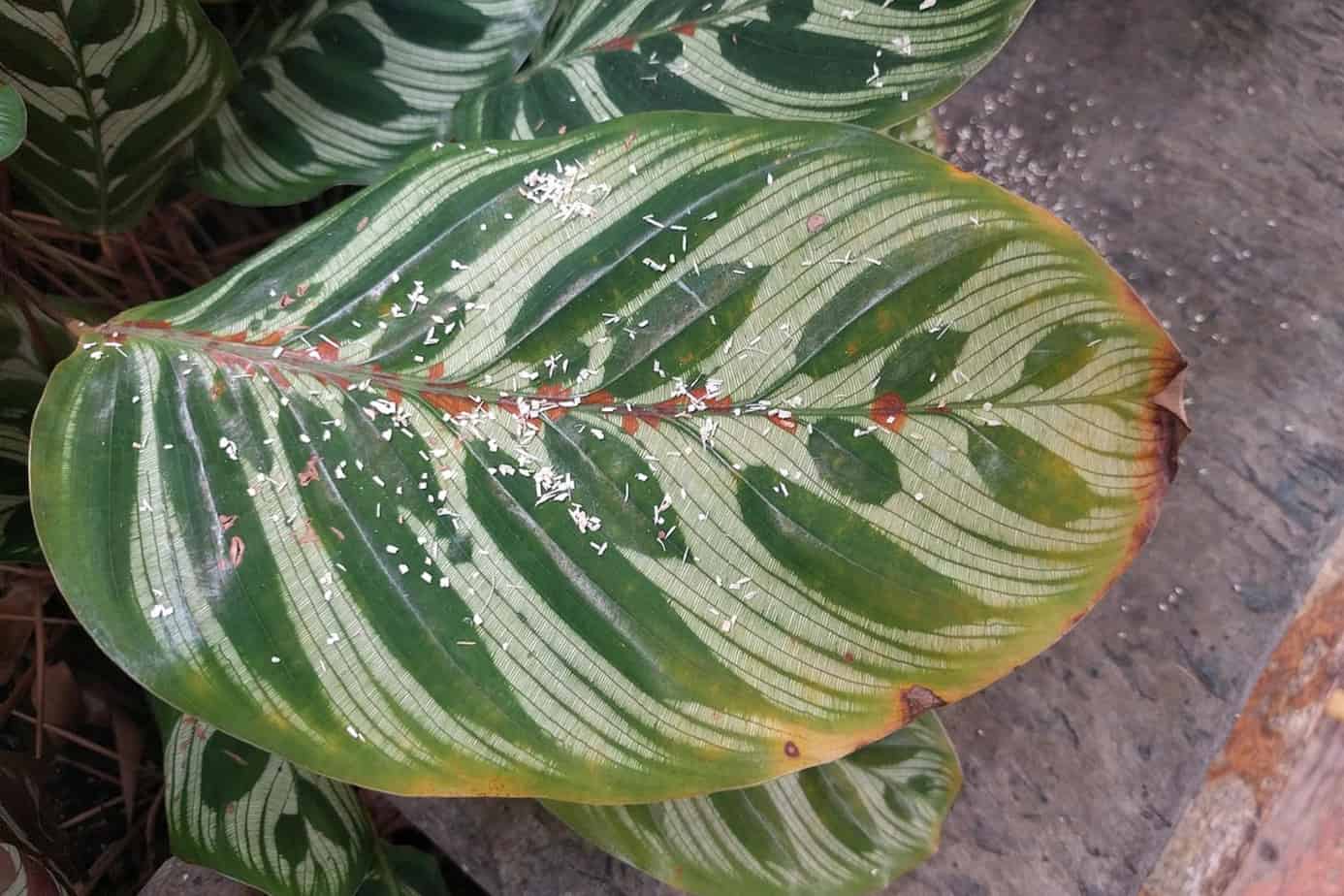
You know you are overwatering your plant if you notice yellowing leaves, and when you see brown edges on the leaves, you are underwatering your plant.
As mentioned before, we recommend watering with distilled water or rainwater. If you use tap water, leave it to stand for 24 hours before watering your plants.
Also, water your plant with room temperature water.
Temperature & Humidity
Part of Calathea makoyana plant care is providing the right temperature and humidity. Your peacock’s tail plant thrives in tropical forests and easily adapts to temperatures indoors.
Please place them in a room with temperatures between 60°F-75ºF (16C°-24ºC). But avoid any sudden temperature drops and do not keep them in drafts or near heat-blowing vents.
If you live in cooler climates, you can take them outdoors in the spring and summer months. But bring them inside when the temperature drops below 55°F (13°C).
To avoid direct sun, you can place them in shaded locations or underneath a tree canopy. If there is one thing these houseplants love, it is humidity.
Your plant will do well in a bathroom with enough sunlight as the warm moist air is similar to the rainforest.
Keep your eyes focused on the humidity always to have a healthy plant. If you notice brown leaf edges, it is a sign that the humidity is too low.
You can use a digital hygrometer to check the humidity levels to adjust the moisture as needed. A great way is to group them with your other plants.
Or you can set them on a pebble tray with water. Alternatively, invest in a humidifier.
Fertilizing Peacock Plants
You can feed your peacock plant from spring to early fall every two to four weeks in the growing season. Yet, your plant grows slower during the winter months and does not need feeding.
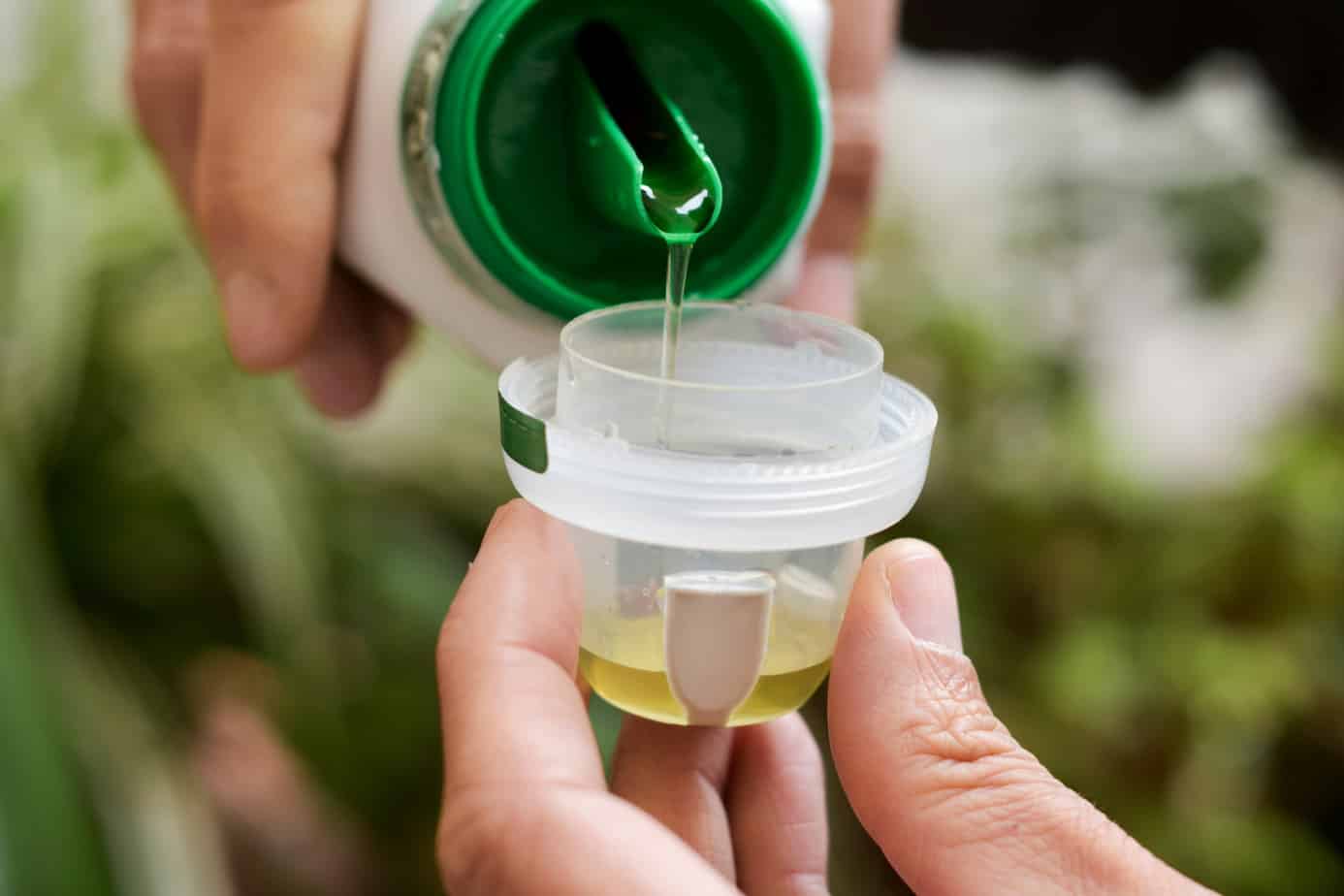
Another thing is that Calathea is a susceptible plant to over-fertilizing so take care. We recommend using a diluted liquid fertilizer with more nitrogen like 3-1-2.
Re-Potting and Pruning
You can expect to transplant your peacock plant every two years. The best time to do this is in spring or early summer.
They grow actively during the growing season and bounce back faster after the cooler winter months when re-potted.
Now is a great time to give them some fresh potting medium with a mix of organic matter to refresh their nutrients.
If your house plants are a bit rootbound, remember to loosen up the roots. Luckily, your plant does not need much pruning.
You can trim off dead foliage using sterilized shears at the joints on the main stem or the soil level. Or you can prune them for a compact appeal to remove the bushy look.
Propagation
The best way to ensure you always have Calathea plants is by using stem cuttings or division propagation. Today, we will give you some tips on using the division technique:
The day before you transplant your peacock plant, provide it with deep watering.
Take a new pot filled with potting soil and enough drainage.
You can fill the container about 1/3 full with the soil.
Next, tip your peacock plant on its side, allowing it to slide out comfortably.
Now, remove the soil around the rhizomes and separate them. You can do this by looking for a division at the rootball. Again, it is best to take your time to prevent breaking the tubers.
Also, now is the best time to inspect the mother plant to remove damaged rhizomes when dividing them into two or more parts.
Next, take each tuber, place them in separate pots, and backfill them with the leftover soil. The important thing is to make the soil level the same as in the old container.
You can use some of the old soil added to the mix to help reduce stress with transplanting.
Water your peacock plant and allow the water to drain freely and away.
If you want, you can place a plastic bag over your plant until there is new growth.
Once you notice a new plant forming, you can remove the bag.
Other Prayer Plant Varieties
The majority of your Calathea plant leaves close at night as if in prayer. Here are calathea varieties that might tickle your curiosity.

Calathea roseopicta
Many gardeners call this houseplant the rose-painted calathea with bright, shiny, dark green leaves. Another fascinating highlight is the cream marking found on the leaves. But take note, this plant is susceptible to cold drafts. You must agree it has striking foliage. So, if you plan on getting one, we can help you with care tips for this plant.
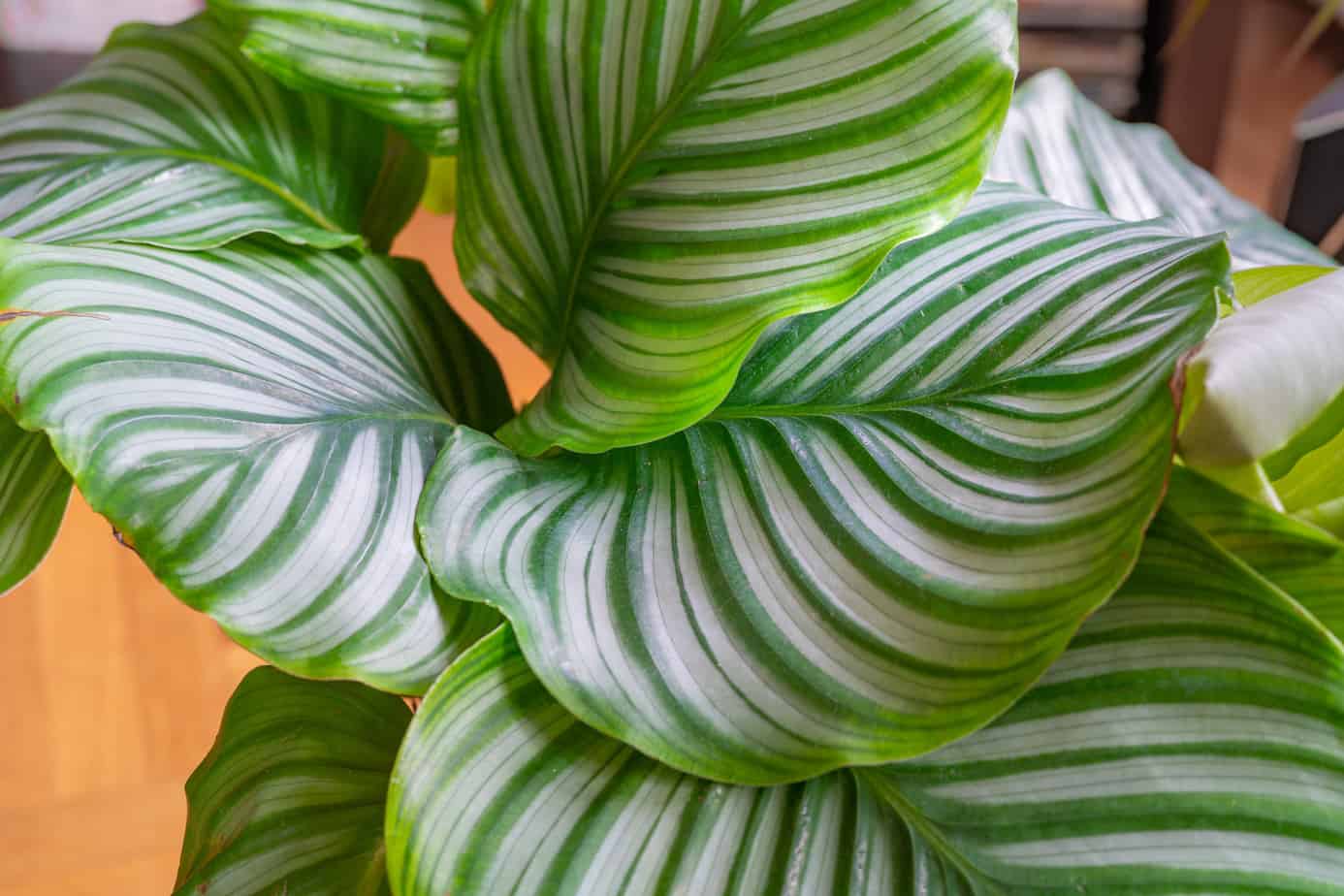
Calathea orbifolia
The round leaf calathea has gorgeous light green foliage with creamy stripes. The leaves can grow up to 12 inches wide, and it has a bushy growth habit.

Calathea Freddie
When you compare this indoor plant to other cathedral windows, you notice pale green leaves. The leaves have a dark green feathered effect.
Plant Diseases & Pests
You will be glad to hear that the peacock plant is not too bothered by pests and diseases. But they exist, and as with most other indoor plants, you need to keep an eye out for:
Root Rot
Yip, this is a common problem with peacock plants resulting from overwatering. As the roots lack oxygen, they die back, or the rot can result from a soil fungus.
The healthy roots turn brown and become mushy. The leaves turn yellow and start to wilt and droop.
If you see your plant withering away, it helps to check if your plant’s roots are infected by re-potting them to try and save them. Then, you can remove the healthy portion to plant in fresh soil.
In stock In stock In stock In stock
$25.99
Sold By:
Succulent Oasis
Medium Crocodile Aloe or Aloe Previfolia
Only 10 available and it’s in 1 people’s basket Rated 4.84 out of 5 based on 352 customer ratings00
Sold By:
Succulent Oasis
$12.99
Sold By:
BubbleBlooms
Watermelon Pilea Cadierei, Aluminum Plant, 4 inch
Rated 4.81 out of 5 based on 279 customer ratings00
Sold By:
BubbleBlooms
Free Shipping
$20.00
Sold By:
Blessed Family Farm
Live Basil Plant
Rated 4.82 out of 5 based on 22 customer ratings03
Sold By:
Blessed Family Farm
$11.99
Sold By:
BubbleBlooms
Haworthia cymbiformis, Cathedral Widow, Rare Haworthia, 3 inch pot, well rooted
Rated 4.81 out of 5 based on 279 customer ratings00
Sold By:
BubbleBlooms
Leaf Spot
Pseudomonas is a bacterial disease resulting in reddish-brown spots causing leaf distortion. To prevent this from happening, it helps keep the leaves dry when you water them. You can remove the diseased leaves and use a copper-based bacteriacide.
Aphids
This is a common insect found in most houseplants indoors. Unfortunately, the insects suck out all your plant’s nutrients and leave behind a honeydew substance.
Your peacock plant will look distorted, and you will find the leaves dropping. You can remove them using a clean cloth with water containing a few drops of liquid dish soap.
Spider Mites
These are also sucking pests you find underneath the leaves. Unfortunately, sometimes the infestation goes unnoticed, and once the damage is done, it is too late for your plant.
The leaves look stippled and discolored, eventually turning yellow. You will notice a spider webbing on the foliage or at the base of your plant.
Scale
Scale feeds on the whole plant, and you can find two scale types. First, you can find the soft or armored scale pestering your peacock plants.
You see both these insects as brown bumps on the foliage and can range in color, texture, and size. Eventually, you find the leaves dropping, or they turn yellow.
Frequently Asked Questions
n 1883, the botanist Charles Morren wrote about plants describing the Calatheus family. Still, as with most prayer plants, the name causes taxonomical problems 100 years later. You may notice some labels with Calathea and not Goepertia, which are the same plants.
If you can take care of and provide the support needed, it should be easy enough with the prayer plant. But if you tend not to water plants often, you might prefer.
hese girls are divas. So, if you notice dying leaves on your prayer plants, it can result from low humidity or too much direct sunlight and underwatering.
The prayer plants are humidity-loving and need moisture to thrive, so if the air is dry, it can cause brown edges on the leaves.
You can water your peacock plant every one to two weeks, allowing the soil to dry out halfway. In bright indirect light, you will water less than in direct sunlight. Still, take note these plants are sensitive to tap water, and filtered water works best.
Yes, the prayer and peacock plant is the same thing, and it has beautiful patterned foliage that stands out in the living space.
Whether you want to buy, sell or simply reach out to other plant enthusiasts, Plantly is the right place to be!
-
$15.00Sold By: Stripes and Variegations
In stock
Philodendron hederaceum – Moonlight Philodendron 4″ Pot
Sold By: Stripes and Variegations -
Free Shipping$39.99Sold By: Aloha Hawaii Orchids
$44.99In stock
Orchid Encyclia Radiata Fragrant Plant Comes in 4″ Pot From Hawaii
Rated 4.65 out of 5 based on 268 customer ratings02Sold By: Aloha Hawaii Orchids -
$20.00Sold By: Southern Oak Exotics
In stock
Biophytum Species Ex Ecuador
Sold By: Southern Oak Exotics -
$8.00Sold By: That Wild Yard
In stock
Pegasus Epiphyllum seed, 40 fresh seeds!
Sold By: That Wild Yard
